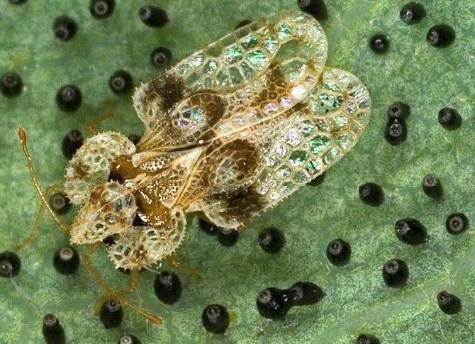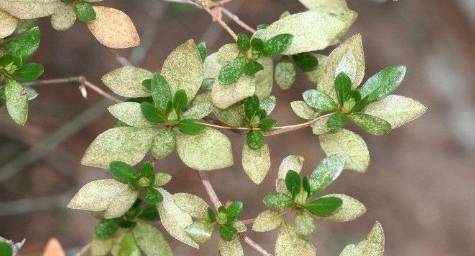Lace Bugs

Lace bugs are sap-feeding insects commonly found on shade trees in the area. Their growth and development occur throughout the summer. However, the damage typically isn’t noticed till August, when their numbers are at their highest. Both the adults and nymphs feed on the undersides of leaves, causing the characteristic copper, scorched, or bleached discoloration on the leaf surface. Lace bug adults have attractive wings that have intricate patterns of veins that resemble lace (hence the common name). The wings are flat on top and extend out over the sides of the body. Adults are approximately 3/8-inch long. Nymphs are black, spiny, and pointed at both ends.
Damage caused by lace bugs varies significantly from year to year, probably in response to variations in weather conditions. Most of the time, trees can handle the damage caused by lace bugs; however, in high numbers, the damage can cause premature leaf drop, and several years of severe feedings can stress the tree. Usually, when you notice the damage caused by this insect, it’s too late to spray, and the damage has already been done. In some cases, spray could be warranted when lace bugs dropping out of the tree onto patios create a nuisance situation. Several chemicals, including insecticidal soap, horticultural oil, carbaryl, bifenthrin, permethrin, or pyrethroids, can treat lace bugs. The last four chemicals are broad-spectrum and will kill lace bugs but will also kill natural predators, so use them with caution. Systemic insecticides are also effective but must be applied early in the year and used with caution.
variations in weather conditions. Most of the time, trees can handle the damage caused by lace bugs; however, in high numbers, the damage can cause premature leaf drop, and several years of severe feedings can stress the tree. Usually, when you notice the damage caused by this insect, it’s too late to spray, and the damage has already been done. In some cases, spray could be warranted when lace bugs dropping out of the tree onto patios create a nuisance situation. Several chemicals, including insecticidal soap, horticultural oil, carbaryl, bifenthrin, permethrin, or pyrethroids, can treat lace bugs. The last four chemicals are broad-spectrum and will kill lace bugs but will also kill natural predators, so use them with caution. Systemic insecticides are also effective but must be applied early in the year and used with caution.

Have questions? Contact our office where our Horticulture Extension Agent will assist you with questions.
Phone: (316) 321-9660
Email: callae@ksu.edu